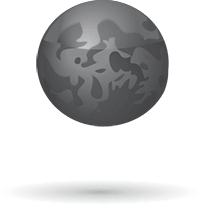Spurred on by the New World screwworm (NWS) outbreak in Mexico, fears about a reintroduction into the United States are mounting. Here we discuss the risk to Kansas cattle and what to do if you suspect an outbreak.
NWS was present in Kansas prior to its eradication from the US in the 1960s. Extension reports compiled by EG Kelly (K-State Extension entomologist from 1918-1949) recorded incidents of NWS infestations in cattle and sheep. Interestingly, he listed them as less impactful than cattle grubs, biting flies, and cattle lice. Prior to eradication, NWS populations would migrate northwards during the spring and summer from overwintering areas in southern Texas, New Mexico, Arizona, California and parts of Florida. Kansas winter temperatures were (and still are) too cold to support year-round fly populations.
For NWS to become a significant problem in Kansas, it will have to first reestablish in southern states. Currently, the primary risk of introduction into Kansas is through the movement of infested animals from outbreak regions during the spring and summer months. Animal movement from Mexico is currently suspended to reduce this risk, however wildlife contributes significantly to the spread of infection, even if domestic animal movement is restricted. To date, there have been no cases of infestation in the US related to the Mexico outbreak. The USDA has announced their NWS Domestic Readiness and Response Policy Initiative which relies on active fly surveillance, restricting animal movement and release of sterile flies, all proven to be the most effective method of control. An additional fly rearing facility in Texas is expected to be operational by the end of 2025 to increase production of sterile flies. NWS females only mate once, while males mate multiple times. By releasing sterile males into the environment, they mate with wild females who then lay non-viable eggs. By out competing wild males, sterile males will reduce the population over time, eventually leading to eradication of the population.
To reduce risk of an outbreak, inspect any animals arriving from out of state for wounds infested with maggots. If maggots are found infesting a wound of any animal, contact the Kansas Animal Health Commissioner and APHIS Area Veterinary Office to co-ordinate sample collection and identification. Maggots should be collected from deep within the wound and preserved in 70% alcohol. As the NWS is attracted to the smell of wounds, inspect and clean any wounds to reduce the risk of an infestation. Detailed information on the fly life cycle, wound care and reporting suspected infestations can be found here. Updates on the current outbreak can be found here, and more information on the USDA response plan can be accessed here.
Contact information for sample collection: Animal Health Commissioner: Dr. Justin Smith, 785-564-6601 Assistant Animal Health Commissioner: Dr. Sara McReynolds, 785-564-6792 APHIS Area Veterinarian Office: 785-228-6565 Thank you to Dr. Cassandra Olds, Extension Livestock for the content of this article. If you have any additional questions, please feel free to reach out to Hunter Nickell, Livestock Production Agent, at any Southwind Extension Office or by email at [email protected].







